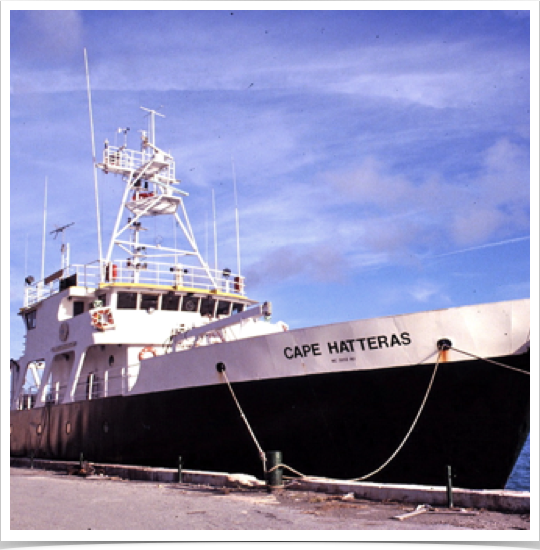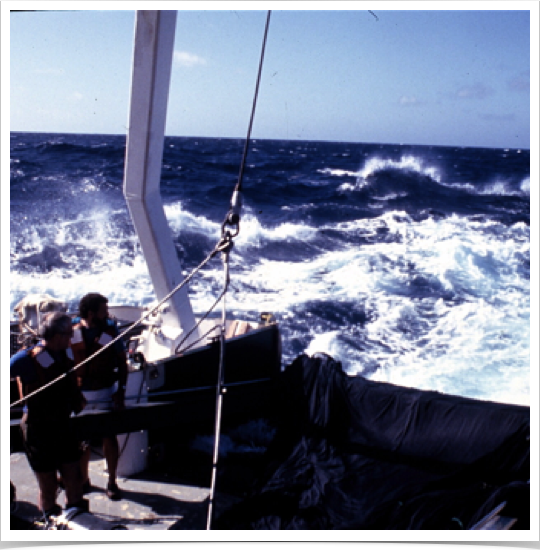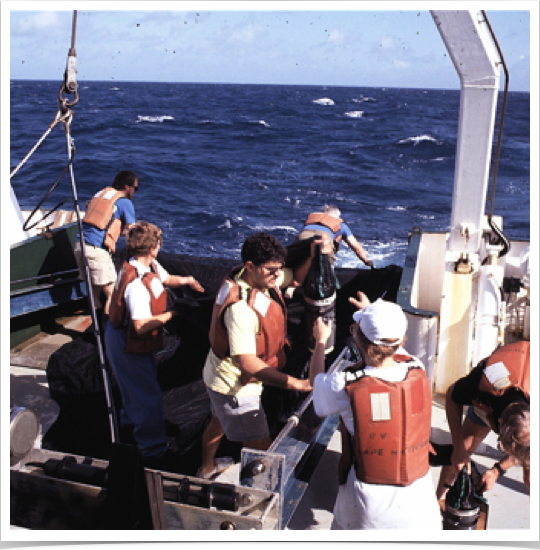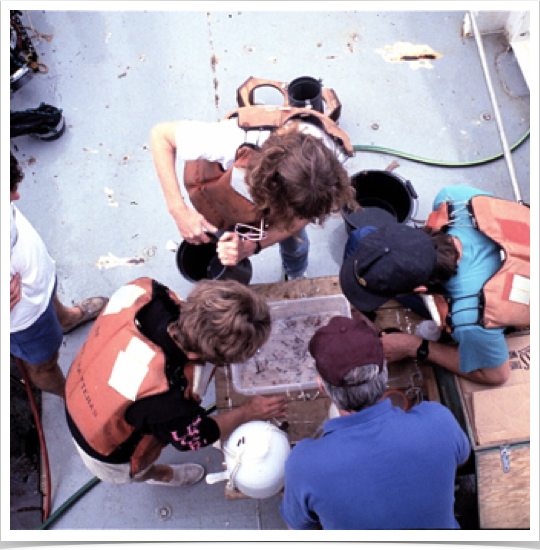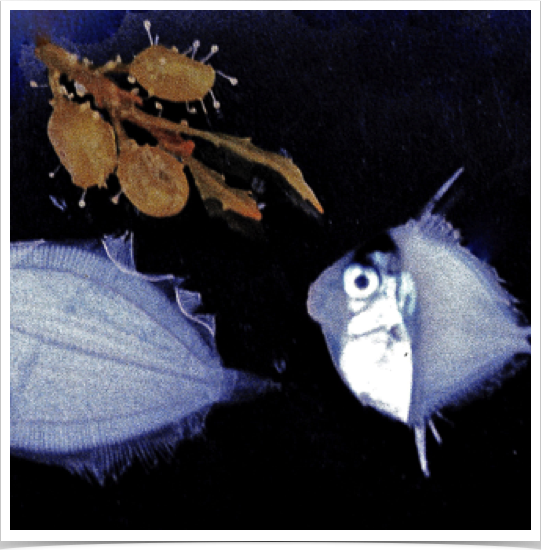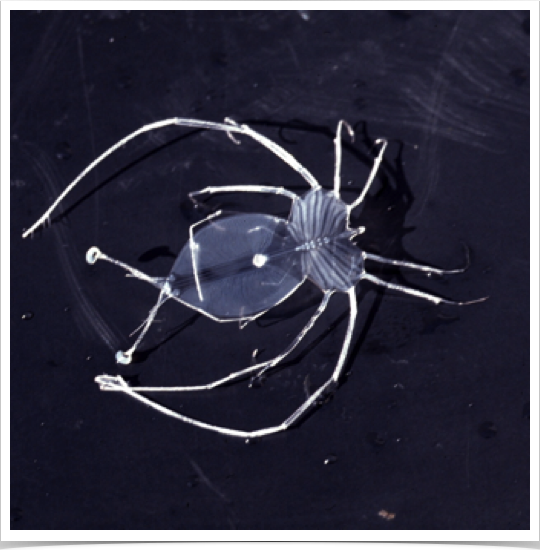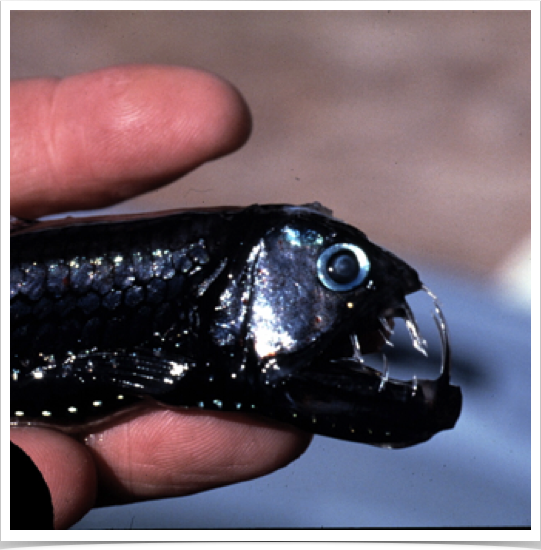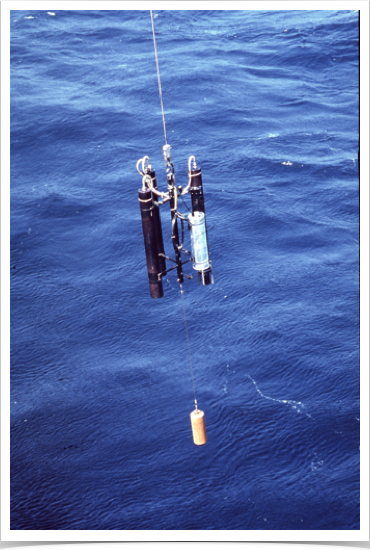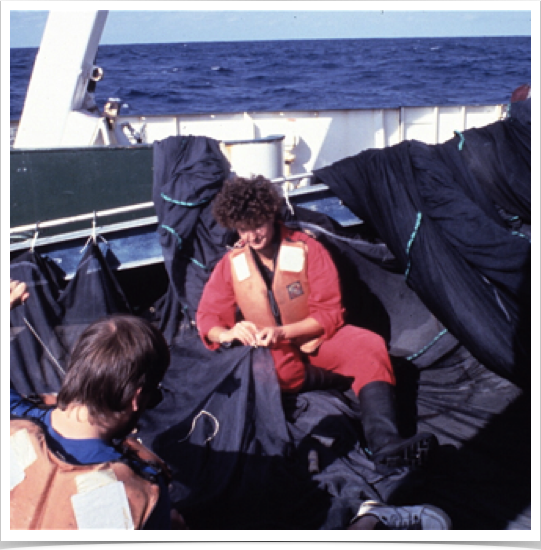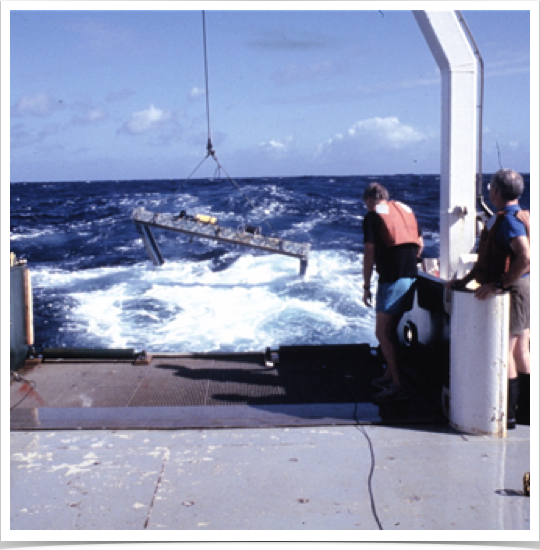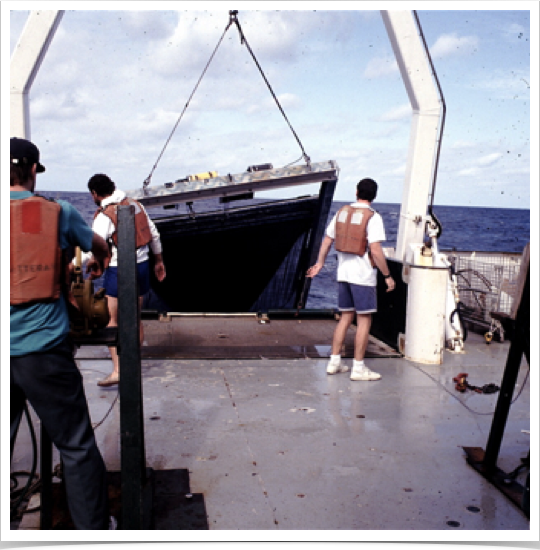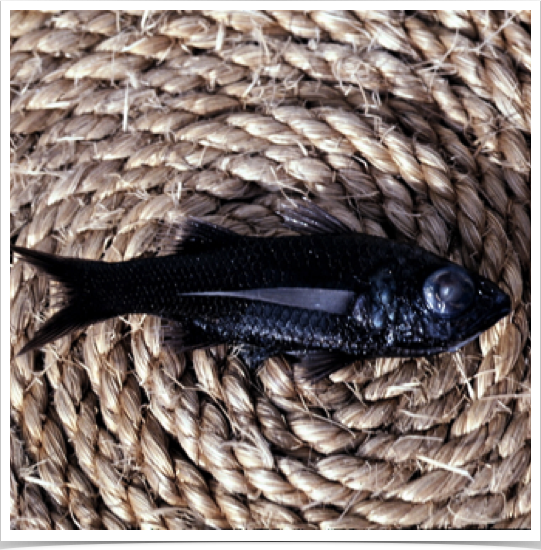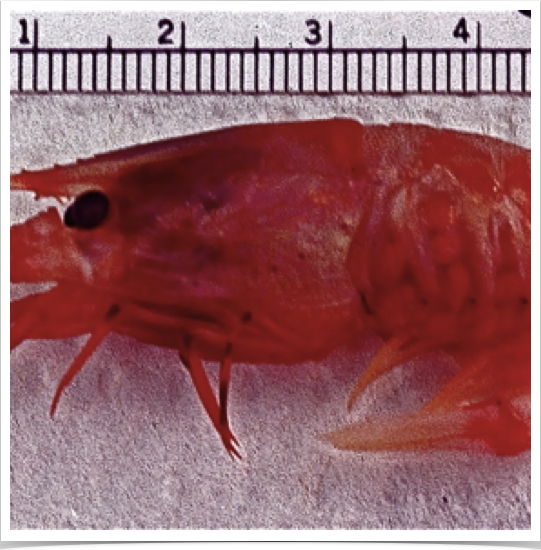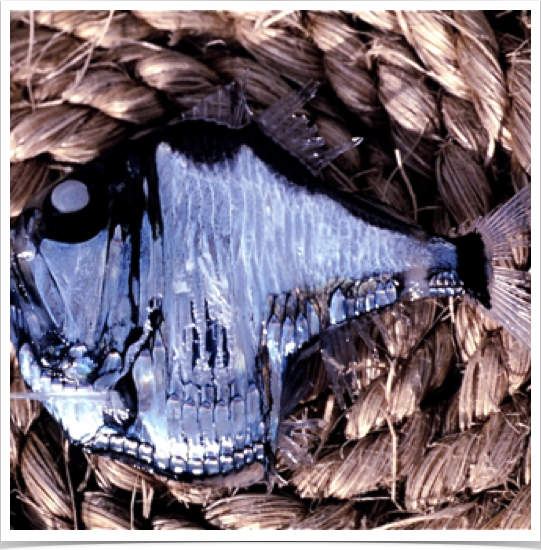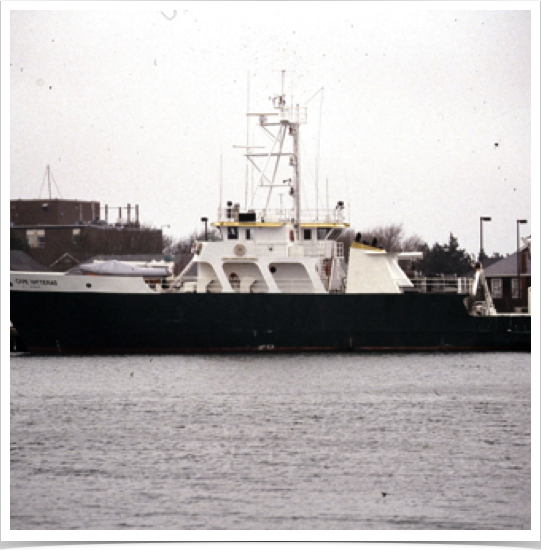RV CAPE HATTERAS
Dr. Alshuth participated in a biophysical oceanographic research expedition to the Sargasso Sea aboard the RV CAPTE HATTERAS (CH) in 1992, studying unique creatures drifting in the tropical Gulf Stream - an expedition which is part of the "Salp Migration Project". The multidisciplinary research vessel CH - managed by the Duke Lab at the University of North Carolina Oceanographic Consortium, and owned by the National Science Foundation and stationed in Beaufort, North Carolina, equipped with modern technology. An ADCP - an Acoustic Doppler Current Profiler, a data communication system SAIL - Serial ASCII Instrumentation Loop, Satellite Navigation, Loran, and a weather station provide a variety of oceanographic data. In each research lab aboard, physical data on atmospheric pressure, ocean temperature and salinity of surface waters are displayed on monitors. A research team from Woods Hole Oceanographic Institute, Scripps Institution of Oceanography in La Jolla, California, Harbor Branch Oceanographic Institute and the University of Maine studied physical, chemical and biological oceanography. On a transect from Norfolk/Virginia to Bermuda, biological samples and oceanographic data were collected using a diversity of oceanographic sampling gear including CTD probe and a MOCNESS-trawl (Multiple Opening Closing Net and Environmental Sensitive System) used to collect biological samples and physical oceanographic data from various depths of the pelagic realm – e.g. epipelagic and mesopelagic zones. Used by day and night, the research team studied the vertical migration of pelagic organisms. This research on distribution and reproduction biology on a diversity of organisms in offshore waters below the surface zone contributed to our knowledge of biomass production in the Atlantic Ocean. Publications related to this expedition include:
Note: Peer-reviewed publications are listed in associated marine research laboratories section.
Alshuth, S. 1994. Participating in US-research in the Sargasso-Sea. West Atlantic expedition of the RV CAPE HATTERAS. (German – Text and Photography). Marine Forum 69 (1/2), 29-30.
Alshuth, S. 1993. Research in the Sargasso-Sea. (German – Text and Photography). Schiffahrt international, 44 (4), 33-34.
Click on any picture below to start slide show.
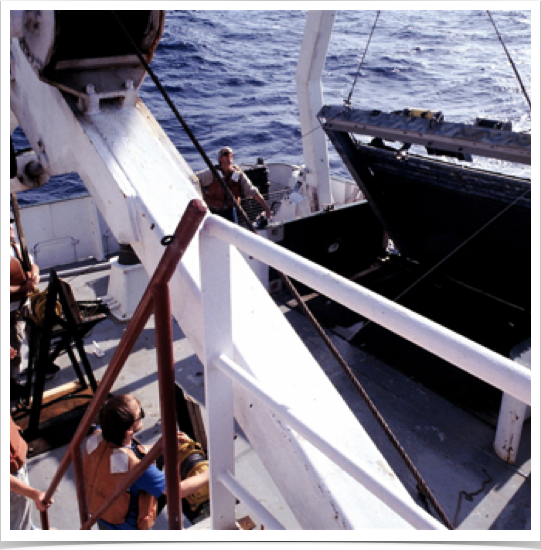

SARGASSO SEA EXPEDITION
Home / Your Professor / Biography / Research / Expeditions / Temperate Ocean Expeditions / Biophysical Expeditions / RV Cape Hatteras
